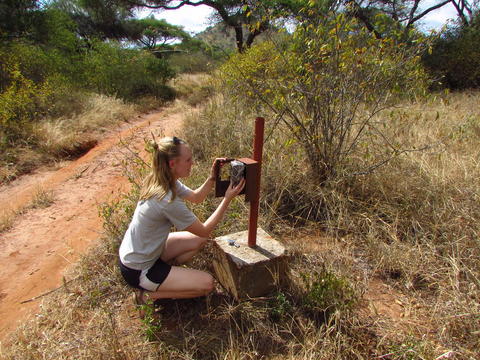
Mary Burak’s dissertation research uses a landscape genetics approach to measure the effects of human land use and activity on apex predator populations in the Ewaso Ecosystem of north-central Kenya. Here, tension remains high surrounding tradeoffs between predator conservation and human land development. Mary’s doctoral research asks, “How does human activity and land use affect predator population genetic structure? How can we apply this insight to future human-predator conflict mitigation?” To answer these questions, she studies Kenya’s two most abundant apex predator species: the lion and spotted hyena. The hyena’s high tolerance and the lion’s intermediate tolerance of humans provides insight into the variability of predator adaptiveness to human activity. Through a landscape genetics approach, project results will provide information about which types of human activity help or hinder predator genetic connectivity. Genetic analysis will be SNP-based, thereby utilizing higher-resolution Next Generation Sequencing to investigate low-density species. A series of scenario models will aid in predicting how land management can be spatially partitioned so as to minimize detrimental effects on predator populations into the future. Together with community-based conservancy organizations, Mary will apply the landscape genetics insights to land management schemes in order to support predator conservation within human communities.
